Monasteries at Meteora
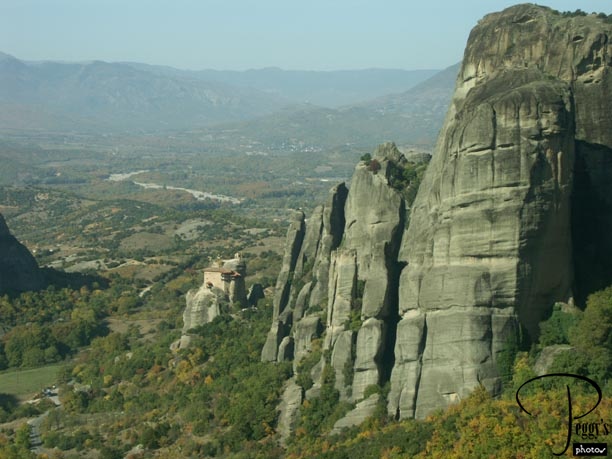
From the town of Kalambaka, we took a twisty ride up a mountain to visit two of the six remaining monasteries of Meteora. The ride was fascinating––we were sometimes below the giant sandstone rocks, sometimes even with them, and often above them. The rocks of Meteora have been a religious site since 985 A.D. when a hermit named Barnabas occupied one of the caves in the rocks. In the mid–14th century, a small church was built here, and then in 1382, a monk named Athanasios founded the first Meteora monastery. Twenty–three monasteries were built, with six remaining today. All can be visited. Even by looking at the photos of these monasteries in my tour books, I found it difficult to 100% correctly name four of the monasteries, so I will only name the other two that I am sure of, the two that we visited. The names of all six of the monasteries are the Varlaam Monastery, Monastery of Saint Nicholaos Anapafsas, Monastery of Roussano, Monastery of the Holy Trinity, Monastery of the Great Meteoron, and Saint Stephen Monastery. Here is one of the four monasteries that I won’t name.

Monasteries at Meteora
Monasteries at Meteora
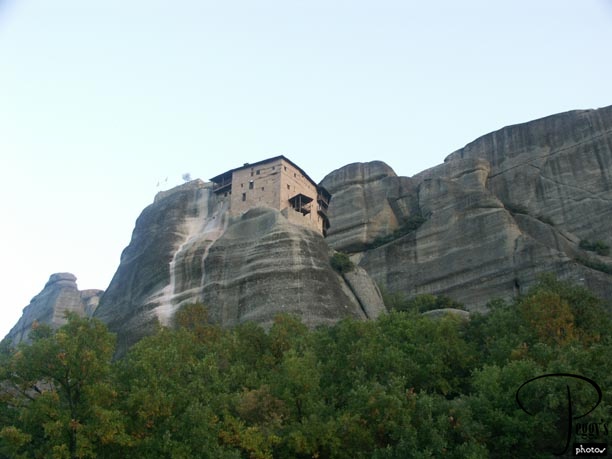
Another of the monasteries. All the monasteries date back to the 14th–15th centuries. It is believed that pegs were hammered into the rock faces to reach the tops of the rocks and then hauled materials up on rope pulleys. Another of the monasteries.

Monasteries at Meteora
Monasteries at Meteora
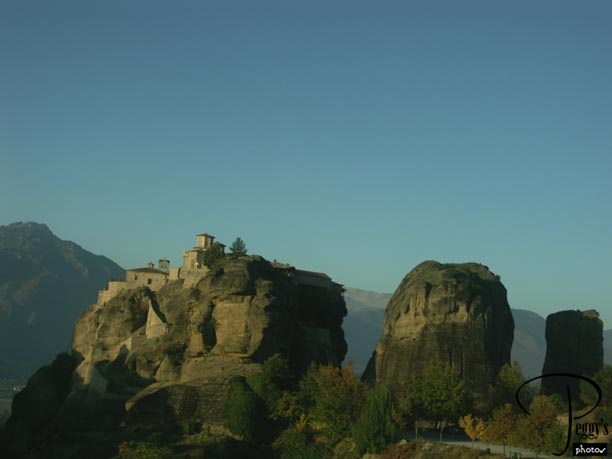
Another monastery.

Monasteries at Meteora
Monasteries at Meteora
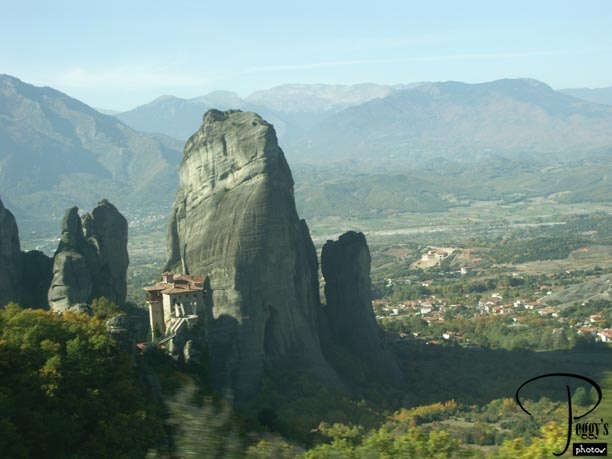
Another monastery.

Monasteries at Meteora
Monasteries at Meteora
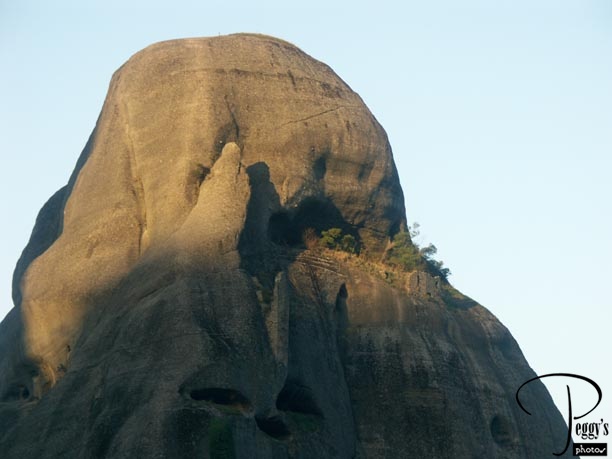
Ruins of one of the old monasteries.

Monasteries at Meteora
Monasteries at Meteora
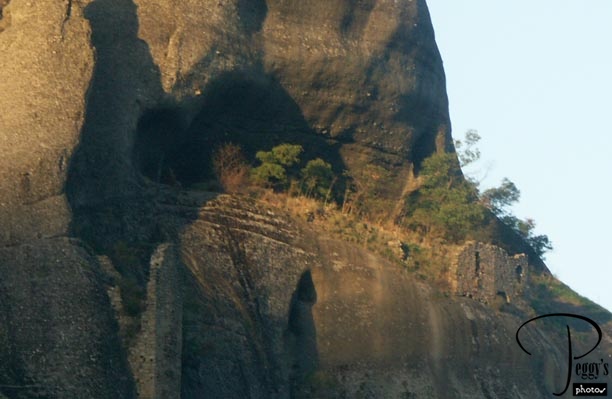
Close–up of the ruins.

Monasteries at Meteora
Monasteries at Meteora
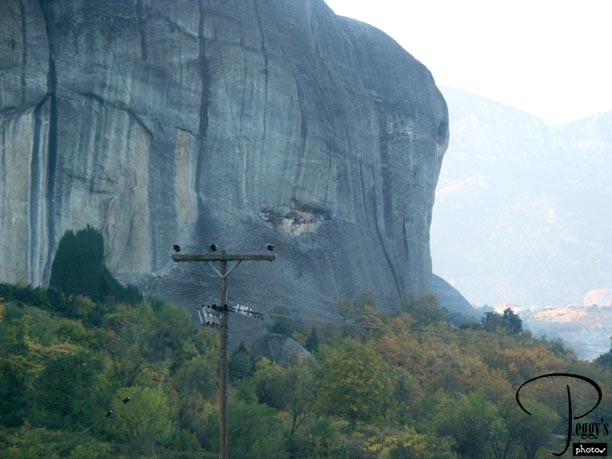
One of the caves in the rock faces used by the hermits.

Monasteries at Meteora
Monastery of the Great Meteoron
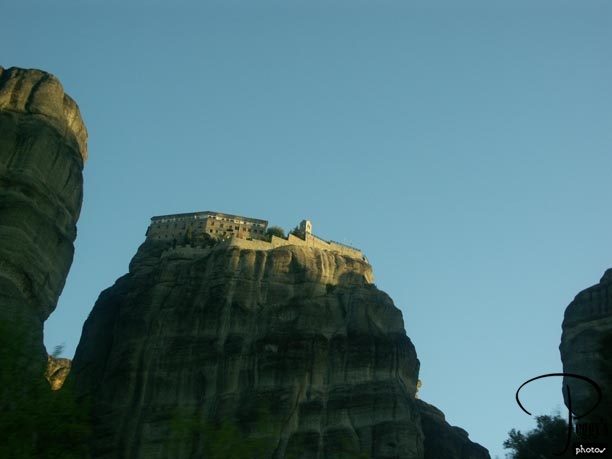
The Monastery of the Great Meteoron. This was the first monastery built and it is the highest one––2045 feet. In 1382, a monk named Athanasios came from Mount Athos to found the Great Meteoron.

Monastery of the Great Meteoron
Monastery of the Great Meteoron
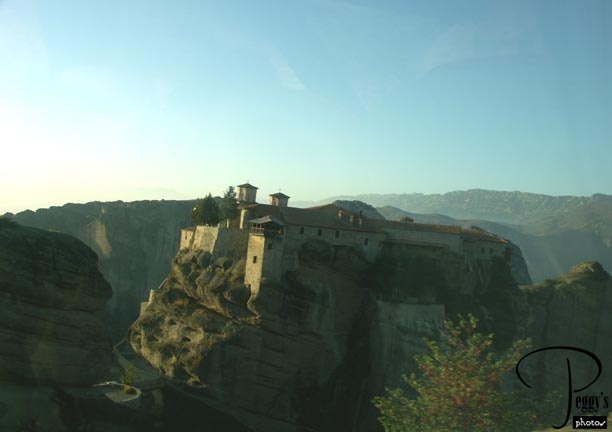
Another view of the Monastery of the Great Meteoron

Monastery of the Great Meteoron
Monastery of the Great Meteoron
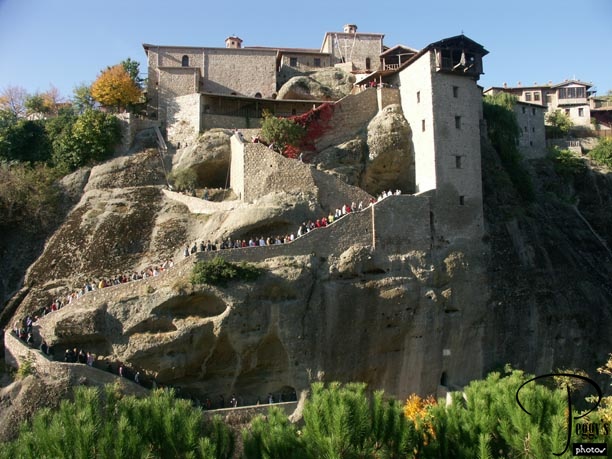
We were to vist the Monastery of the Great Meteoron. I took this photo after we had visited the monastery, but it gives a good view of the 300 steps that we had to walk up. Actually, it wasn’t nearly as strenuous a climb as anticipated, probably because the steps were even, there were numerous resting landings, and our steep walking yesterday at Delphi probably had gotten us in shape for the climb. Sandra got us started very early this morning so we could be one of the first groups to reach the top.

Monastery of the Great Meteoron
Monastery of the Great Meteoron
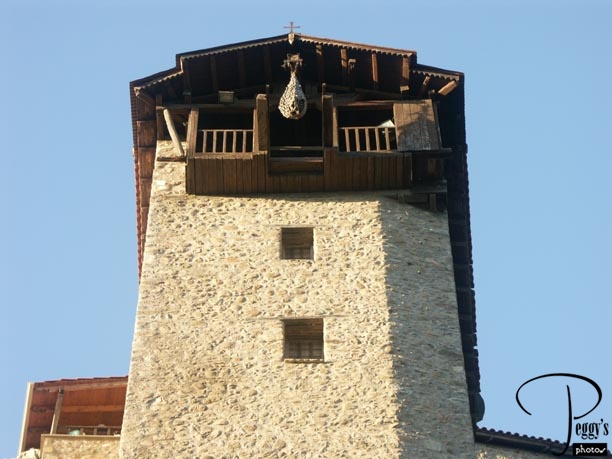
The Ascent Tower. Before stairs were built up to the monasteries in the early 1900s, one way monks reached the top was to be raised (and when necessary lowered) in the rope basket hanging from the tower.

Monastery of the Great Meteoron
Monastery of the Great Meteoron
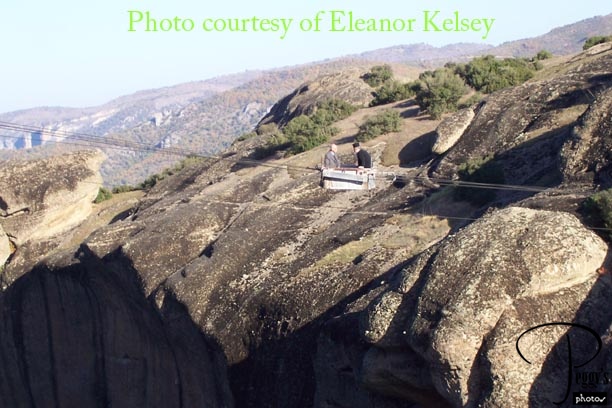
Eleanor took this great photo of a monk and another passenger being transported to the monastery via more modern means.

Monastery of the Great Meteoron
Monastery of the Great Meteoron
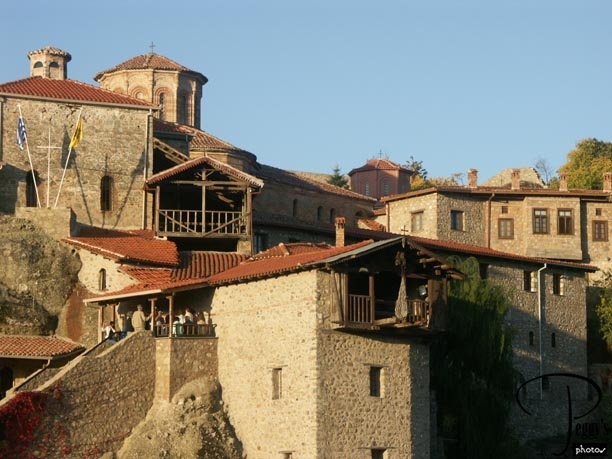
Close–up view of the Monastery of the Great Meteoron.

Monastery of the Great Meteoron
Monastery of the Great Meteoron

Cave at the foot of the monastery. The monk Athanasios first lived in this cave while the monastery was being built. He is buried in the monastery’s main church.

Monastery of the Great Meteoron
Monastery of the Great Meteoron
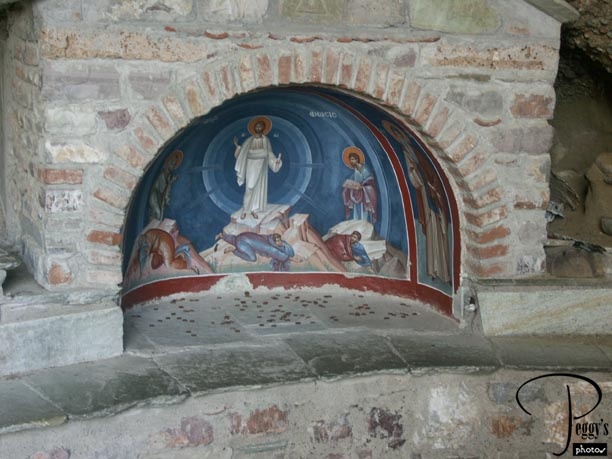
Close–up of the painting in the cave.

Monastery of the Great Meteoron
Monastery of the Great Meteoron
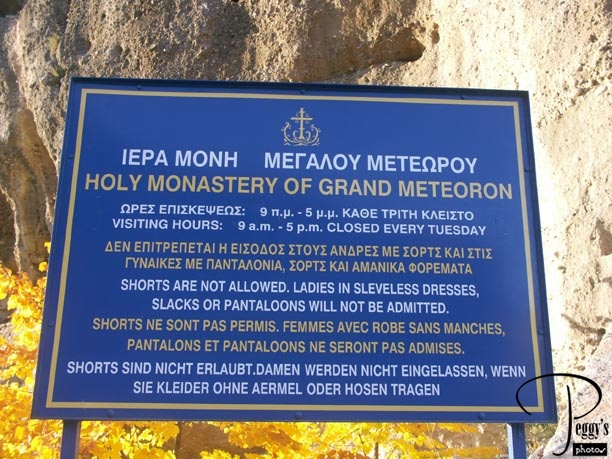
Dress code sign outside the monastery.

Monastery of the Great Meteoron
Monastery of the Great Meteoron
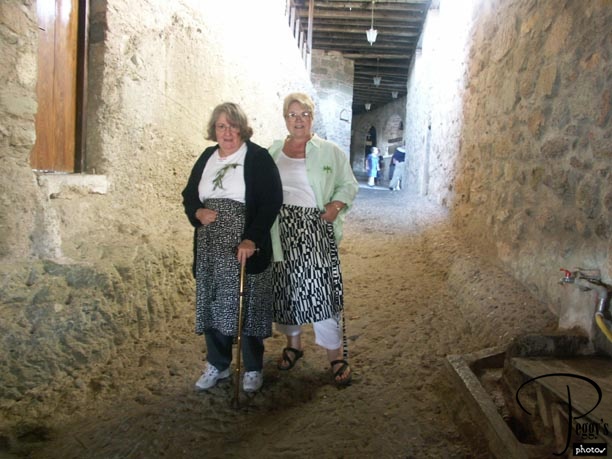
If you didn’t bring your own skirt with you (I did), you could borrow a wraparound skirt from the monastery. Here, Toby and Ina are modeling the skirts.

Monastery of the Great Meteoron
Monastery of the Great Meteoron
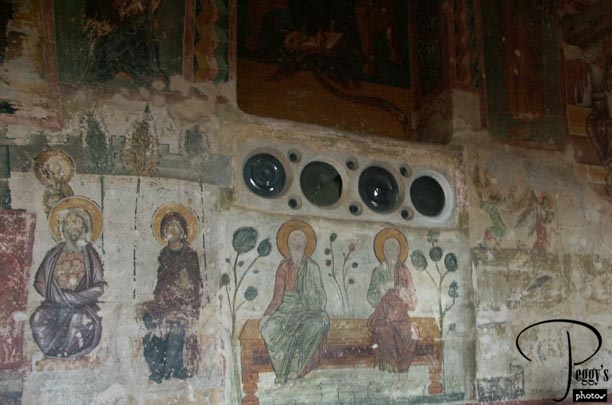
Outside frescoes, probably dating back to the 16th century.

Monastery of the Great Meteoron
Monastery of the Great Meteoron
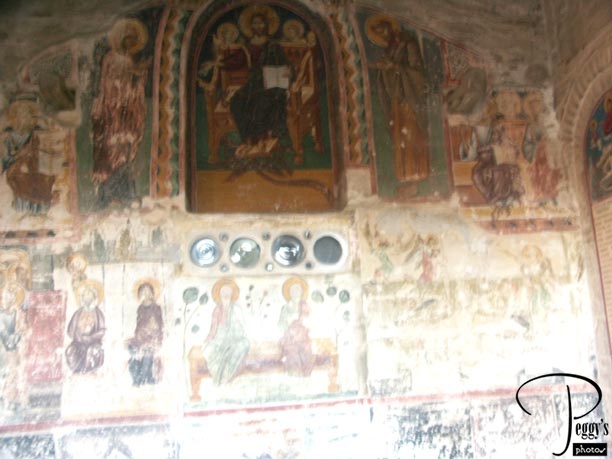
More outside frescoes.

Monastery of the Great Meteoron
Monastery of the Great Meteoron
No photos were allowed inside the church, which was covered with icon paintings. However, I scanned two of the icon paintings that were shown in a book I bought on Meteora.
Monastery of the Great Meteoron
Monastery of the Great Meteoron
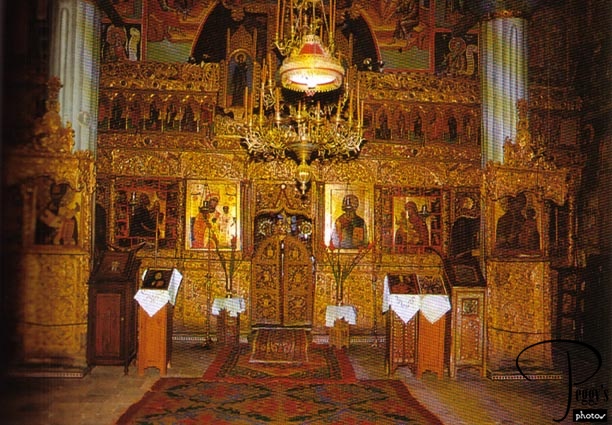
I also scanned this photo of the altar of the church.

Monastery of the Great Meteoron
Monastery of the Great Meteoron

Grounds of the monastery.

Monastery of the Great Meteoron
Monastery of the Great Meteoron
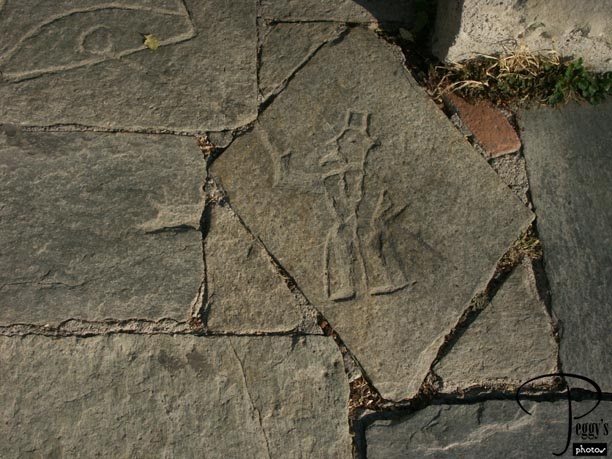
Etchings on the rock pavers.

Monastery of the Great Meteoron
Monastery of the Great Meteoron
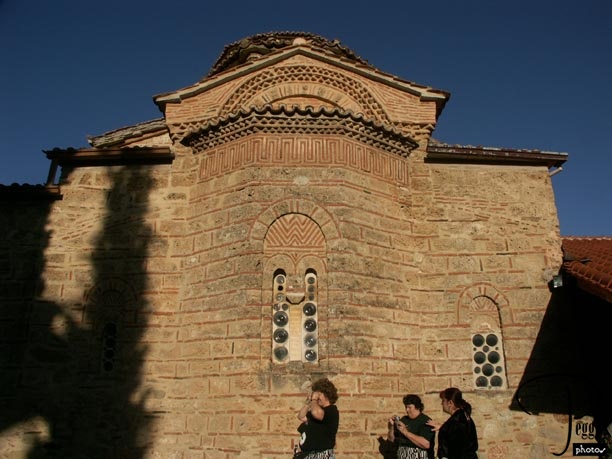
The church (katholikon) of the monastery.

Monastery of the Great Meteoron
Monastery of the Great Meteoron
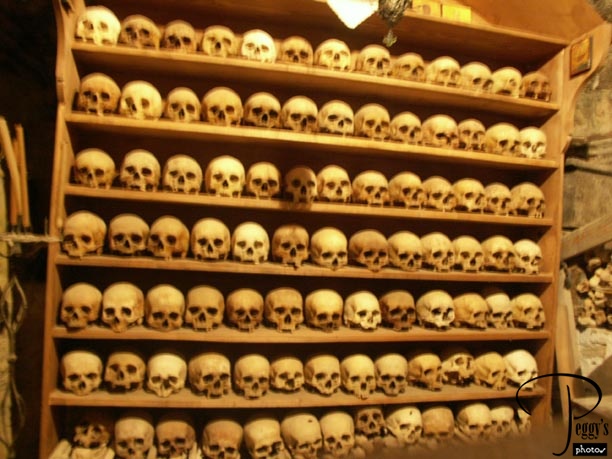
A gruesome display of the skulls and bones of past monks of the monastery.

Monastery of the Great Meteoron
Monastery of the Great Meteoron
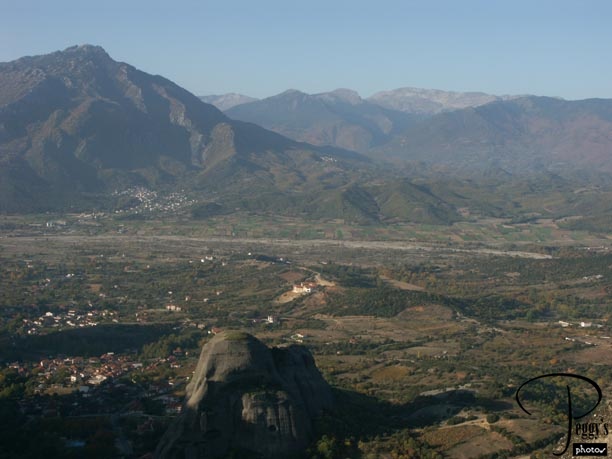
View of the valley from the monastery.

Monastery of the Great Meteoron
Monastery of the Great Meteoron

Starting the walk down the 300 steps with a view of another monastery.

Monastery of the Great Meteoron
Monastery of the Great Meteoron
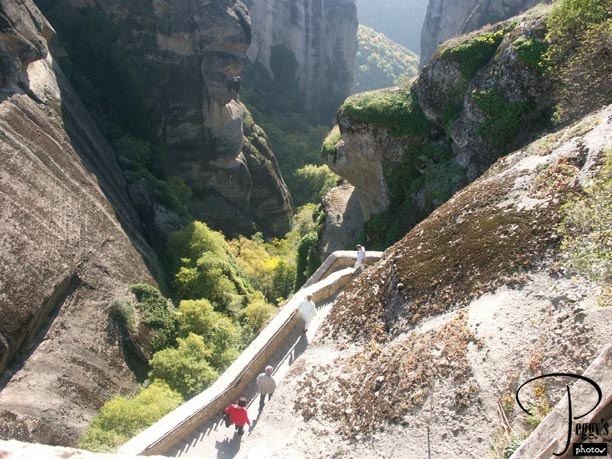
More of the walk down.

Monastery of the Great Meteoron
Monastery of the Great Meteoron
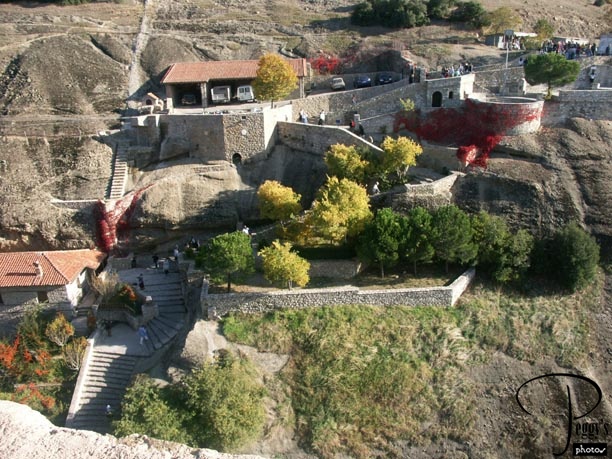
Getting closer to the parking lot.

Monastery of the Great Meteoron
Monasteries at Meteora
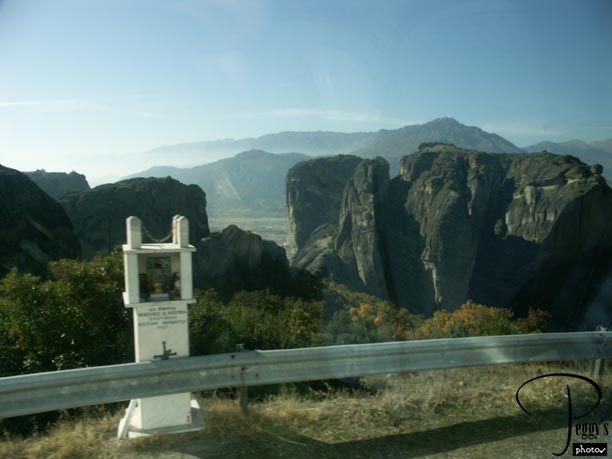
A roadside chapel seen from the bus on our way to visit the Saint Stephen Monastery.

Monasteries at Meteora
Saint Stephen Monastery
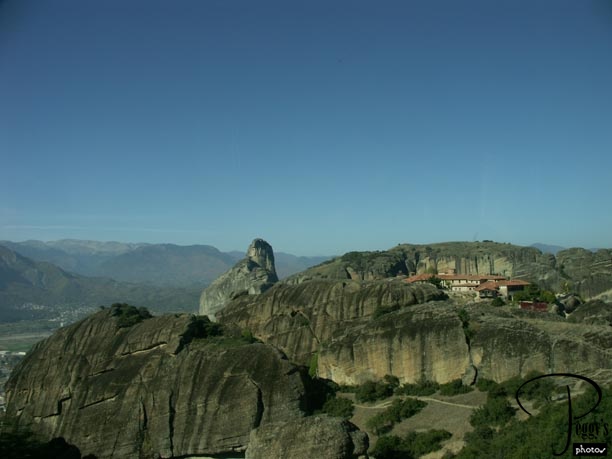
View of the Saint Stephen Monastery.

Saint Stephen Monastery
Saint Stephen Monastery
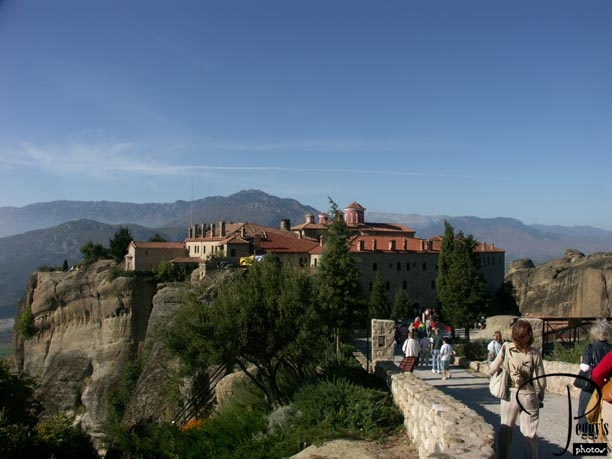
This is the only one of the six monasteries that you can visit without climbing steps. The monastery has been a nunnery since 1961.

Saint Stephen Monastery
Saint Stephen Monastery
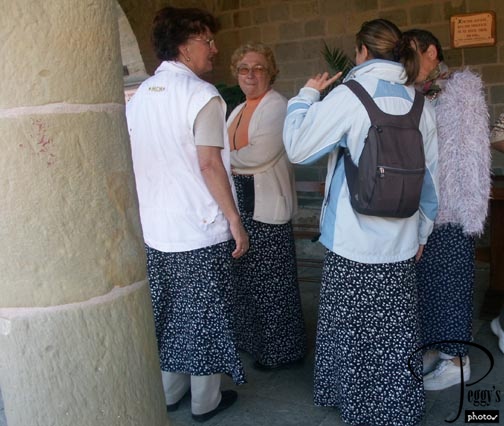
The skirts that were loaned here. These women were not in our tour group.

Saint Stephen Monastery
Saint Stephen Monastery
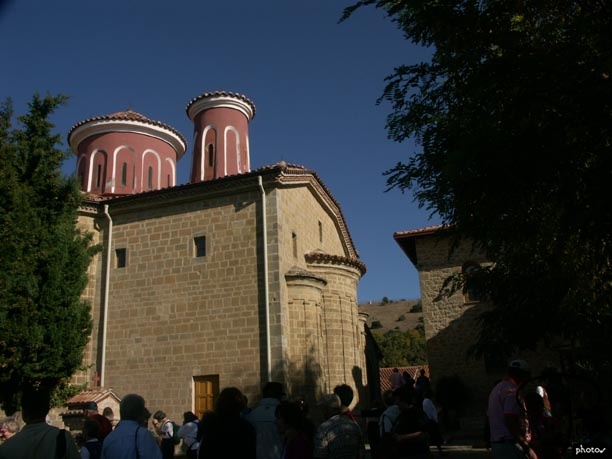
The monastery’s grounds.

Saint Stephen Monastery
Saint Stephen Monastery
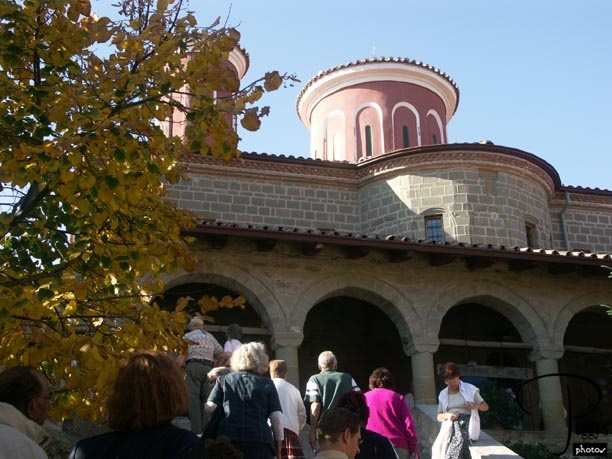
Going into the Church of Saint Charalabus at the monastery.

Saint Stephen Monastery
Saint Stephen Monastery
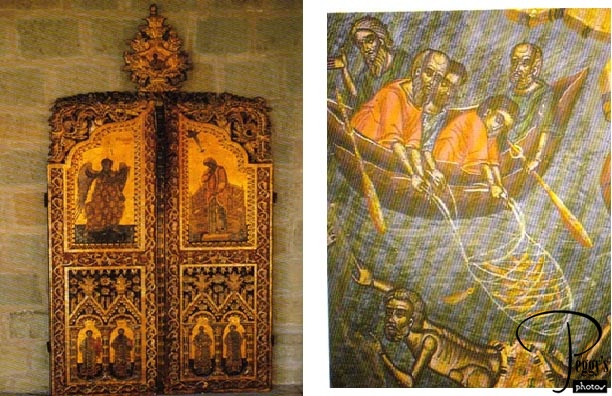
No photos were allowed in the church. I scanned these two photos from a book I bought of Meteora. The one of the left is of the main door of the church. Wall painting called “The Fishing” from the church.

Saint Stephen Monastery
Saint Stephen Monastery
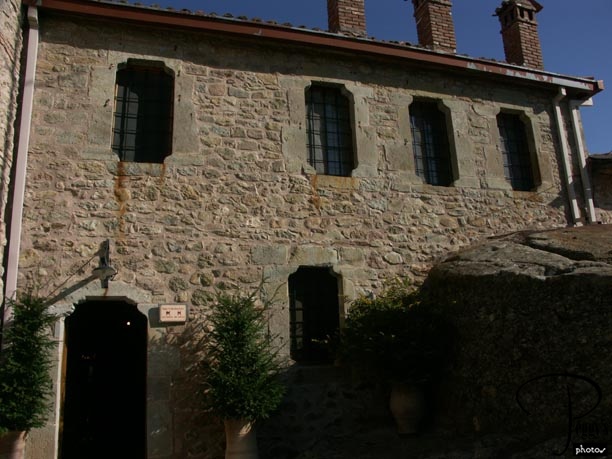
Another view of the monastery.

Saint Stephen Monastery
Saint Stephen Monastery
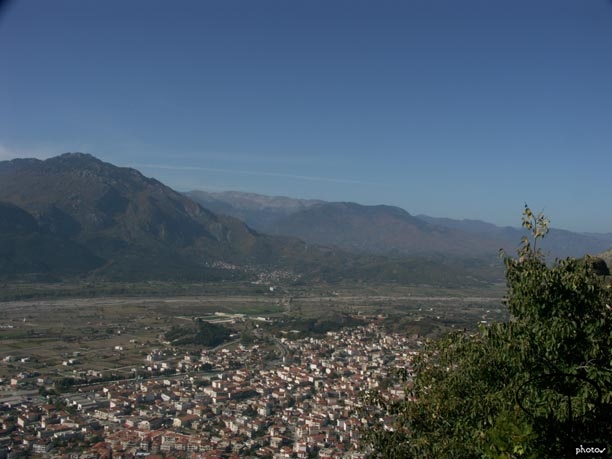
View of the valley and the town of Kalambaka from the Saint Stephen Monastery.

Saint Stephen Monastery
Kalambaka
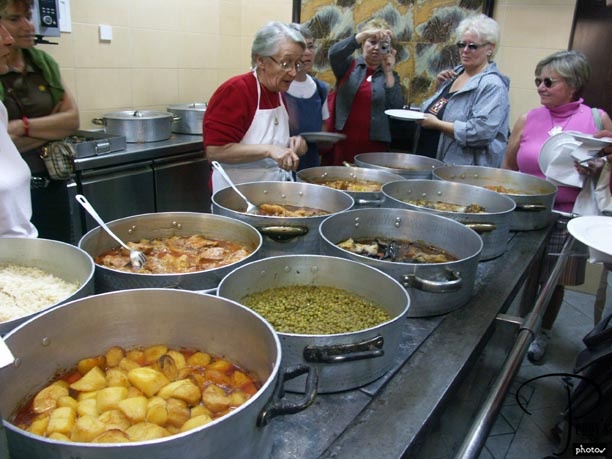
We drove down the mountain and had lunch in Kalmabaka at a restaurant where you are invited into the kitchen to pick out what looks good to you to feast on. I believe that I chose the chicken.

Kalambaka
Kalambaka
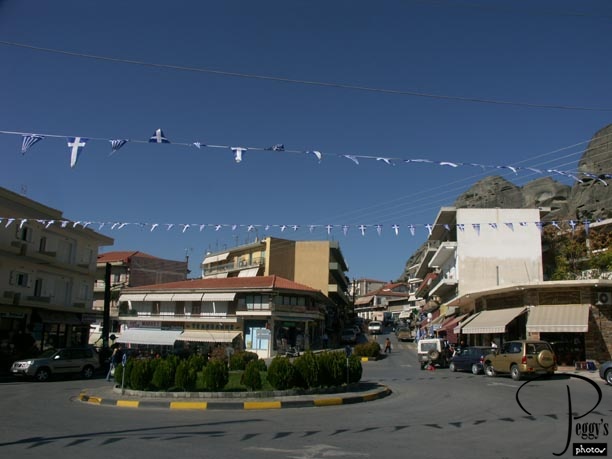
We said goodbye to Kalambaka and started our long drive east back to Athens. Kalambaka was decked out in blue flags, getting ready to celebrate the National Holiday tomorrow called Ochi Day, which commemorates the day in 1940 that the Greeks replied “Ochi” (“No”) to Mussolini’s 1940 ultimatum for Greece to surrender.

Kalambaka
On the Way Back to Athens
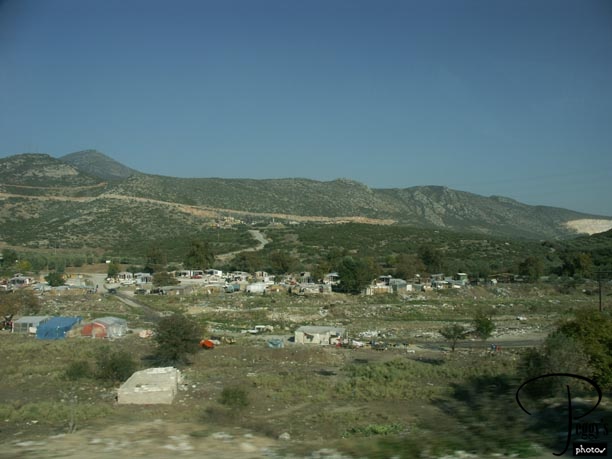
We passed a Gypsy encampment on our way back to Athens.

On the Way Back to Athens
On the Way Back to Athens

Close–up of the Gypsy encampment.

On the Way Back to Athens
On the Way Back to Athens
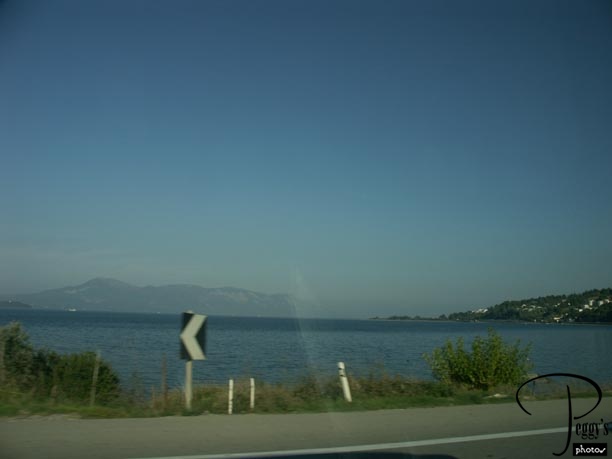
Driving along the beautiful Aegean Sea.

On the Way Back to Athens
On the Way Back to Athens
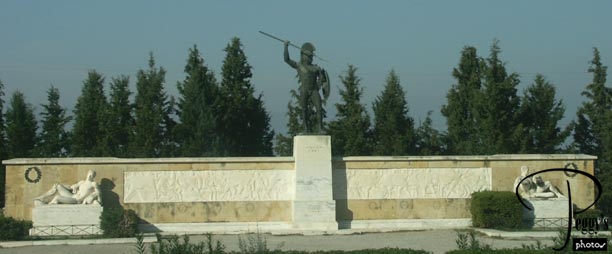
Bronze statue of King Leonideas (1955). The statue is placed opposite the burial ground of the soldiers who died here. In 480 B.C., an army of about 7,000 soldiders led by Leonides I of Sparta battled a Persian army of over 2,600,000. Only two Greek soldiers survived. All of Central Greece, including Athens, fell to the Persians. Only three years later, Athens and her allies, in the Battle of Plataiai, defeated the Persians.

On the Way Back to Athens
Athens
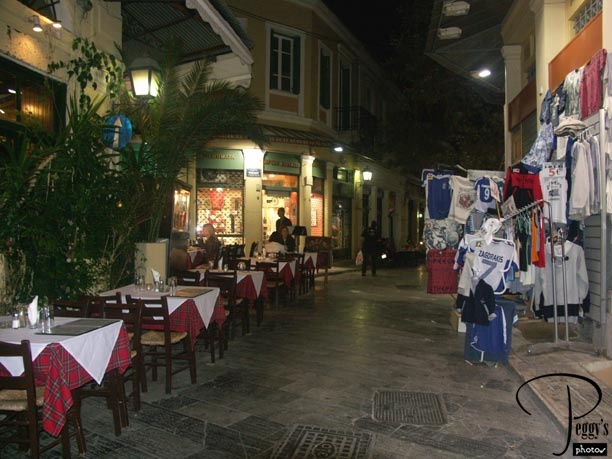
Another photo of the Plaka at night.

Athens
Athens
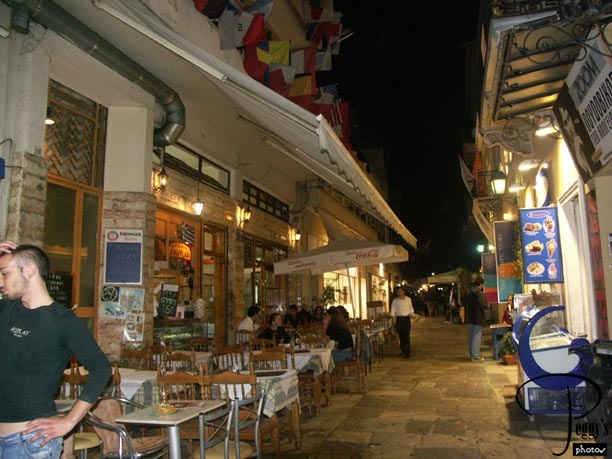
We arrived back in Athens about 6:30 p.m. We had to say goodbye to our wonderful guide Sandra, who took very good care of us and who very patiently tried to teach us perhaps more than we could absorb of Greek history. At this time, our group would be splitting up––some going home the next day (Janet and Marie), some going on a three–day Aegean cruise, and others of us going on a seven–day Aegean cruise (Eleanor and me). Our foursome had dinner together at the Plaka. Where are all the people? This place is usually packed. Athens was starting to shut down in anticipation of tomorrow’s holiday.
